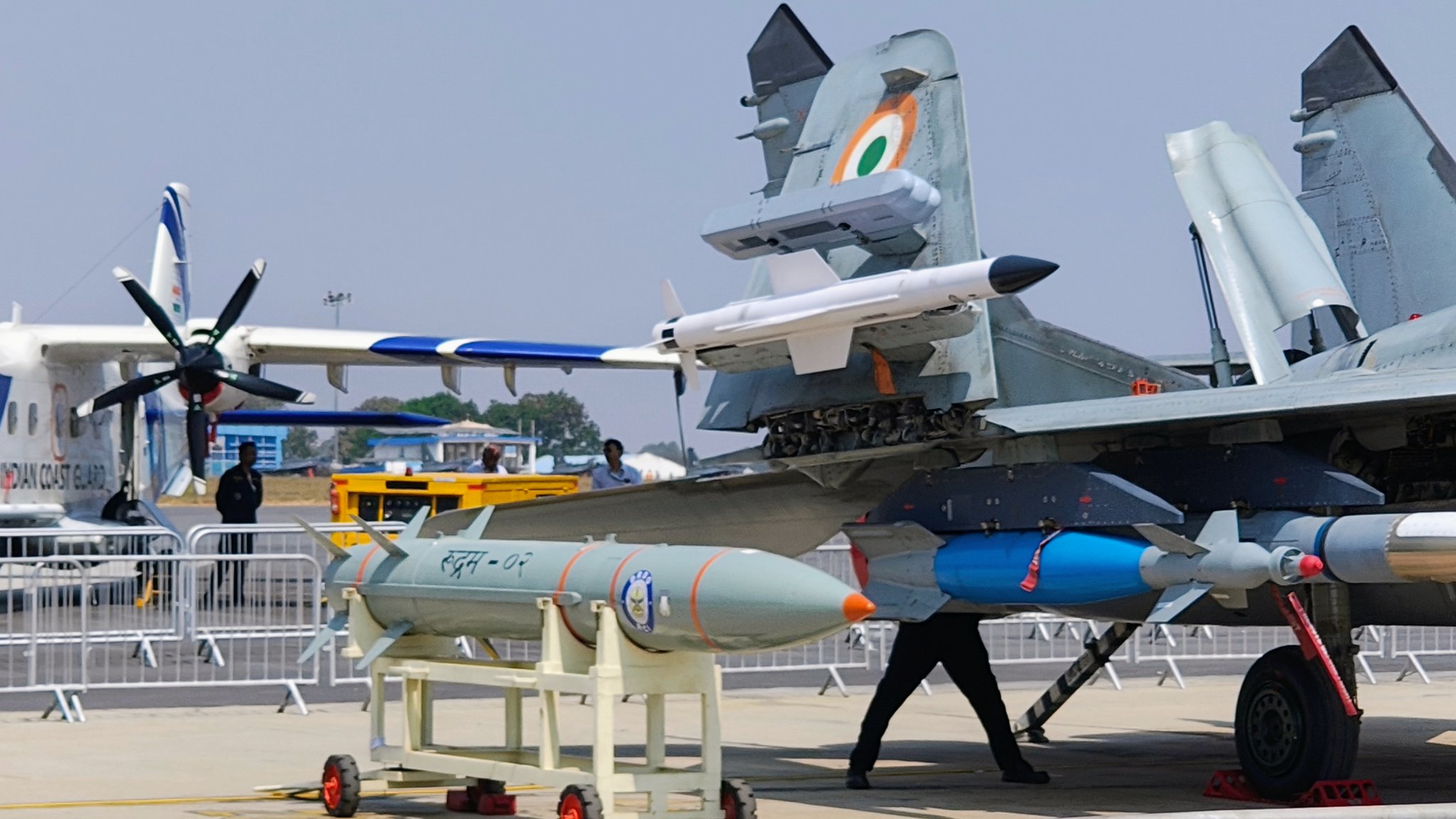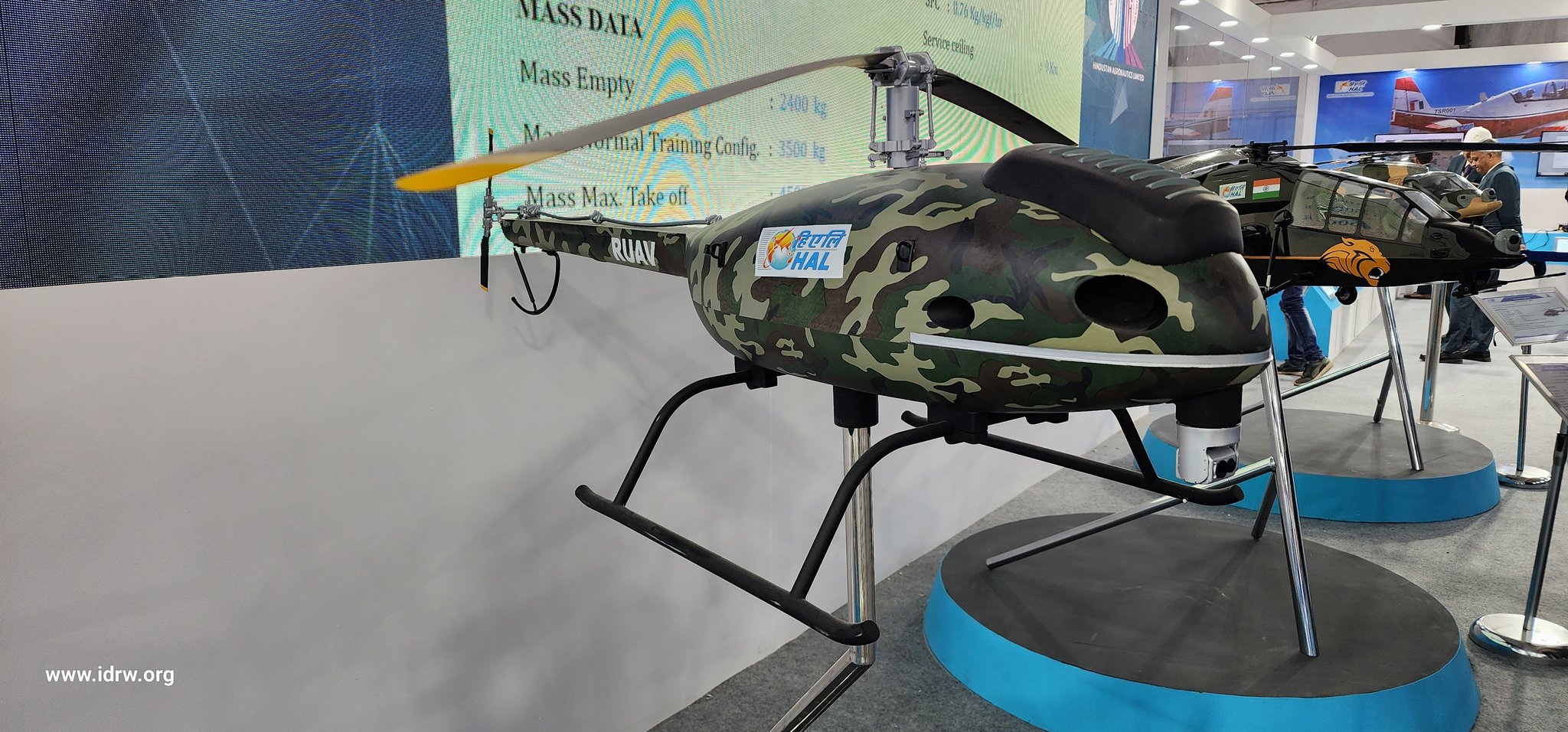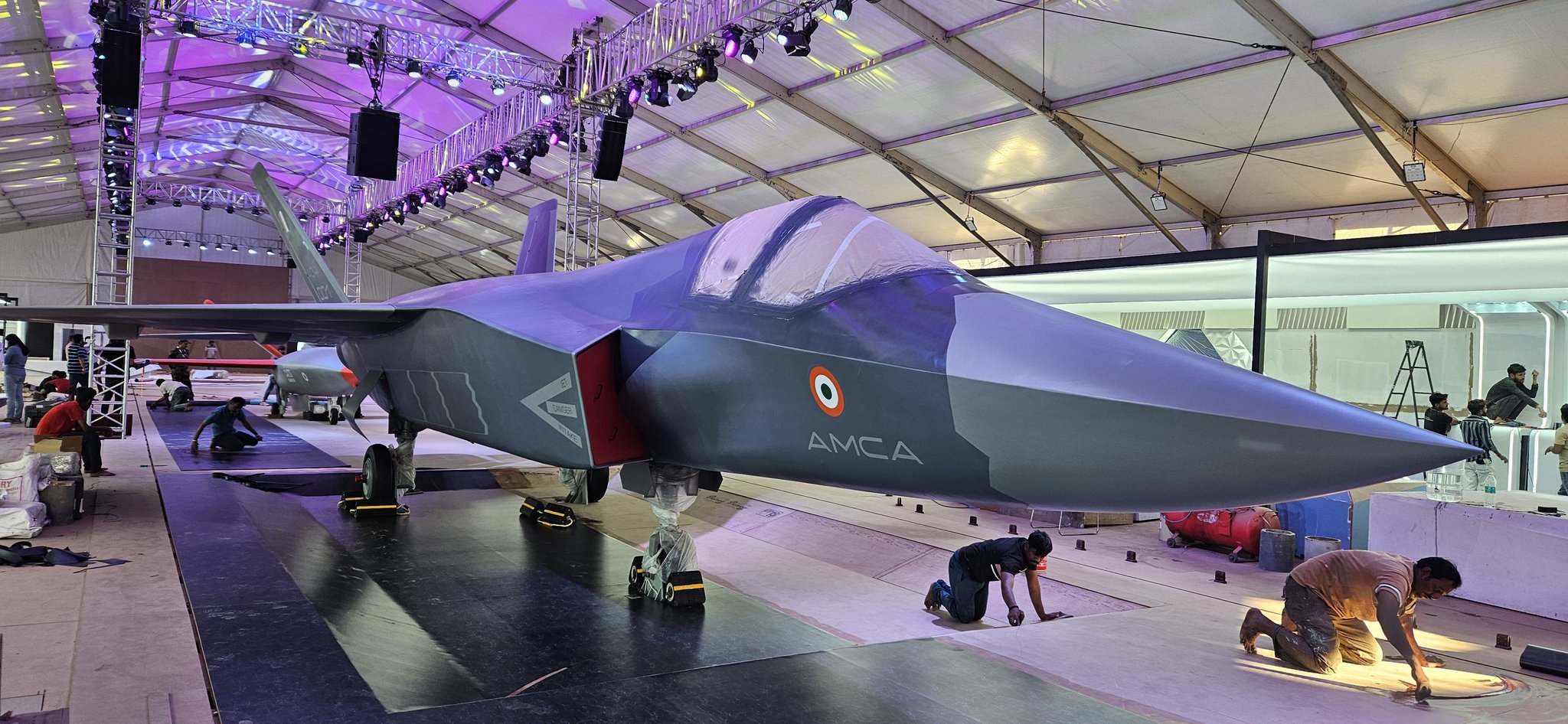AFI
SOURCE: AFI


At the Aero India 2025 event, US officials have clarified their stance on potential military sales to India, particularly concerning the Medium Multi-Role Fighter Aircraft (MRFA) deal. According to a report by idrw.org, the United States is not currently planning to offer the F-35 Lightning II in the MRFA procurement, which also involves Transfer of Technology (ToT). Instead, the options on the table for India are the F-15EX Eagle II and the F-21, a variant of the F-16 Fighting Falcon tailored for the Indian market.
During discussions with idrw.org staff, it was elucidated that while the F-35 is not part of the initial offerings, there’s a pathway for India’s request to be considered under a Government-to-Government (G2G) deal. However, this would not guarantee the transaction. The US officials mentioned that if India formally requests the F-35, the matter would be taken up for further discussion, potentially leading to negotiations, but there is no assurance that such a deal would be finalized.
Continue readingSOURCE: AFI


The skies above Bengaluru are set to host an unprecedented display at Aero India 2025, where the Russian Su-57 and the American F-35 Lightning II are both showcasing their capabilities. Amidst this backdrop, Sergey Bogdan, a Hero of Russia and a seasoned test pilot, has stirred the aviation community with his insights into a hypothetical dogfight between these two fifth-generation fighters.
Bogdan emphasized the Su-57’s superior maneuverability, particularly its ability to perform complex aerial maneuvers thanks to its advanced thrust vectoring technology. He noted that in close quarters, the Su-57’s agility could give it an edge over the F-35, which is designed more as a strike fighter with less emphasis on dogfighting.
Continue readingSOURCE: AFI


In a significant move to bolster its underwater capabilities, the Indian Navy has finalized a deal exceeding Rs 36,000 crore with Mazagon Dockyards Limited (MDL) for the construction of three additional Scorpene-class submarines. The contract, which is poised to be signed by March 31, 2025, marks a new chapter in India’s naval strategy but raises questions due to the steep increase in costs compared to previous acquisitions.
Each of the new submarines is set to cost around Rs 12,000 crore, a figure that has sparked considerable debate. This is nearly three times the cost of the six Scorpene submarines acquired under the initial Project-75, where each submarine was priced at approximately Rs 3,500 crore, totaling Rs 21,000 crore for all six. The significant price hike has not been thoroughly explained by officials, leaving room for speculation and concern over budgetary implications.
Continue readingSOURCE: AFI


At Aero India 2025, a significant display of India’s growing self-reliance in defense technology was witnessed as the indigenously developed RudraM-II Air-to-Surface missile was seen positioned near the Indian Navy’s MiG-29K. This visual confirmation indicates that RudraM-II, designed to neutralize a variety of enemy assets, is on track to be integrated with the naval fighter jet, expanding its tactical capabilities.
The RudraM-II is designed to be a game-changer in India’s air-to-surface missile capabilities, adding a significant edge to the Navy’s ability to target and neutralize enemy radar systems, missile defense installations, and other critical infrastructure from both low and high altitudes. It promises to enhance the Mig-29K’s strike capabilities, further strengthening India’s naval air power.
Continue readingSOURCE: AFI


Swedish defense giant Saab has introduced its innovative r-TWR deployable solution to the Indian Air Force, offering a new dimension to air traffic control (ATC) directly on the battlefield. This system, as described by Mats Palmberg, Chairman and Managing Director of Saab India, can revolutionize how air traffic services are managed, especially in dynamic and challenging operational environments.
The r-TWR, or Remote Tower, is designed to act as an air traffic control facility that can be deployed rapidly, with installation taking only one hour, and is portable enough to be transported by a C-130J aircraft. This capability makes it immensely valuable for military operations where traditional air traffic control towers might not be feasible or where the battlefield conditions are fluid.
Continue readingSOURCE: AFI


In a significant upgrade to its infantry capabilities, the Indian Army is slated to receive 70,000 AK-203 assault rifles this year, with an additional 100,000 units expected in 2026, as confirmed by defense sources. This procurement is part of an ongoing arms deal with Russia, aimed at modernizing the Army’s arsenal with one of the world’s most reliable and advanced assault rifles.
The AK-203 rifles, which have already seen an initial delivery of 35,000 units in 2024, are being manufactured under a joint venture between India and Russia at a facility in Amethi, Uttar Pradesh. This collaboration, under the banner of Indo-Russian Rifles Private Limited (IRRPL), signifies not just a step towards equipping the Indian forces with cutting-edge weaponry but also a move towards increasing indigenous defense manufacturing.
Continue readingSOURCE: AFI


In a remarkable moment of aviation diplomacy and technological convergence, Russian aircrews for the Sukhoi Su-57 were seen taking photos of the USAF F-35 Lightning II as it taxied out for a demonstration at Aero India 2025 in Bengaluru. This unprecedented event marks the first time that an Eastern fifth-generation fighter jet, the Su-57, and a Western fifth-generation counterpart, the F-35, met at the same venue, highlighting the global significance of Aero India as a platform for showcasing cutting-edge defense technology.
As the F-35 taxied out, the Russian Su-57 aircrew, in full uniform, could be seen capturing the moment with their cameras. The unusual sight of Russian ground crew photographing a Western fighter jet was an intriguing and telling gesture, reflecting mutual interest and respect for each other’s technological advancements. The Su-57, which has been hailed for its stealth, supercruise capability, and cutting-edge avionics, was seen as a counterpart to the F-35, which has made its mark globally for its stealth, versatility, and operational flexibility.
Continue readingSOURCE: AFI


At Aero India 2025, NewSpaceResearchandTechnologies (NRT) is unveiling its groundbreaking range of SHESHNAAG Swarming Unmanned Air Systems (SUAS), which represent a major leap in modern defense technology. Drawing inspiration from the mythological multi-headed serpent Sheshnaag, which strikes its prey with deadly precision, these cutting-edge unmanned systems are designed to operate in swarms, delivering both kinetic and non-kinetic effects on tactical battlefields.
The SHESHNAAG series introduces a revolutionary concept in autonomous warfare, utilizing collaborative autonomy to carry out complex missions with precision and overwhelming force. These swarming drones are engineered for precision strikes, capable of saturating targets across a variety of operational ranges, from 15 km for close battlefield engagements to deep-strike capabilities of over 1000 km.
Continue readingSOURCE: AFI


The Centre for Military Airworthiness and Certification (CEMILAC) is poised to make significant announcements at Aero India 2025, including the issuance of the Restricted Military Type Certificate (RMTC) for two pivotal defense projects: the ASTRA Beyond Visual Range (BVR) air-to-air missile and the Hindustan Turbo Trainer-40 (HTT-40) aircraft. This move, alongside the release of new guidance material for the life extension of aircraft and systems, marks a crucial step in advancing India’s indigenous defense capabilities.
The ASTRA, developed by the Defence Research and Development Organisation (DRDO), is a testament to India’s growing prowess in missile technology. Designed for air superiority, this missile can engage aerial targets at distances beyond visual range, enhancing the combat capabilities of the Indian Air Force’s fighter jets. The RMTC signifies that the missile has passed rigorous testing and meets the necessary military standards for operational use.
Continue readingSOURCE: AFI


Bengaluru’s Throttle Aerospace Systems is set to captivate attendees at Aero India 2025 with the showcase of their latest innovation, the TAVAS UAS, specifically the ALV_TACT model. This state-of-the-art small unmanned aerial system (UAS) is engineered to redefine the standards of endurance and payload capacity for surveillance missions, offering a versatile tool for modern security and reconnaissance operations.
The ALV_TACT stands out with its field-swappable 3-axis gyro-stabilized EO/IR (Electro-Optical/Infrared) payload, combining 4K HDR for daylight operations with thermal imaging for night or low-visibility scenarios. This dual capability ensures that the system can adapt to various mission requirements, providing clear, high-resolution imagery regardless of environmental conditions. The system’s flexibility is further enhanced by its ability to switch between different payloads quickly, making it a multi-functional asset in any operational scenario.
Continue readingSOURCE: AFI


In a move that has stirred significant controversy within the French defense community, the Aeronautical Development Agency (ADA) of India has recently confirmed the design for their Twin Engine Deck Based Fighter (TEDBF), which bears striking similarities to the French Rafale fighter jet. This development has led to a flurry of reactions on social media, particularly on X, where sentiments range from accusations of copying to more nuanced views on design inspiration.
Sébastien Clavier, a notable voice in the French defense community, expressed his dismay on X, stating, “India is quietly making an exact copy of the Rafale…” His comment reflects a broader concern among some French observers about intellectual property and design rights. This sentiment was echoed by others in the community, highlighting an underlying tension regarding technology transfer and international defense collaborations.
Continue readingSOURCE: AFI


@connect_rishav
In an unprecedented display of modern aerial might, a rare photo capturing the Russian Sukhoi Su-57 Felon alongside the American Lockheed Martin F-35 Lightning II has gone viral on X, marking the first time these two fifth-generation fighter jets have appeared together at an airshow. The historic moment occurred at Aero India 2025, held in Bengaluru, providing a spectacular showcase of advanced military aviation technology from two of the world’s superpowers.
The viral image, shared by numerous enthusiasts and aviation analysts on X, captures the two jets in what appears to be a moment of static display or perhaps during taxi maneuvers, showcasing their sleek designs and advanced aerodynamic features. The backdrop of the Indian sky adds an exotic touch to this rare encounter.
Continue readingSOURCE: AFI


Hindustan Aeronautics Limited (HAL) is set to showcase the prototype of the RUAV-200, a high-altitude, medium-endurance drone, at the upcoming Aero India event. This drone, also known as the Rotary Unmanned Aerial Vehicle (RUAV), marks a significant advancement in India’s unmanned aerial technology, specifically tailored for the challenging terrains of high-altitude regions.
Developed for surveillance, reconnaissance, and target acquisition, the RUAV-200 is engineered to perform in extreme conditions. Its coaxial, rotary-wing design with a fuel engine makes it unique among UAVs, offering stability and endurance in high-altitude environments.
Continue readingSOURCE: AFI


Dynauton Systems, an innovator in the unmanned aerial vehicle (UAV) sector, is poised to make a significant impact at Aero India 2025 with the unveiling of its PATANG® Tethered UAV System. This advanced system is engineered for providing real-time operational field surveillance, promising to redefine how surveillance is conducted in various environments.
Unlike traditional drones limited by battery life, PATANG leverages a tether system that provides continuous power, allowing for extended flight times. This feature is critical for long-duration surveillance missions.
Continue readingSOURCE: AFI


IMAGE CC Vayu Aerospace Review
The Aeronautical Development Agency (ADA) has come under intense scrutiny after showcasing what appears to be an outdated 1:1 scale model of the Advanced Medium Combat Aircraft (AMCA) at Aero India 2025. The model, initially thought to represent the latest design iteration, has instead been identified as belonging to an older version of the jet, leading to widespread frustration among enthusiasts and experts on the social media platform X.
The model in question, which was displayed at the Hindustan Aeronautics Limited (HAL) Pavilion, was supposed to symbolize the pinnacle of India’s aerospace development efforts. However, keen observers quickly pointed out significant discrepancies. Notably, the model featured longer, connected horizontal swash plates in one variant and connected swash plates with vertical stabilizers in another, elements that do not align with the latest design iterations intended for production.
Continue reading